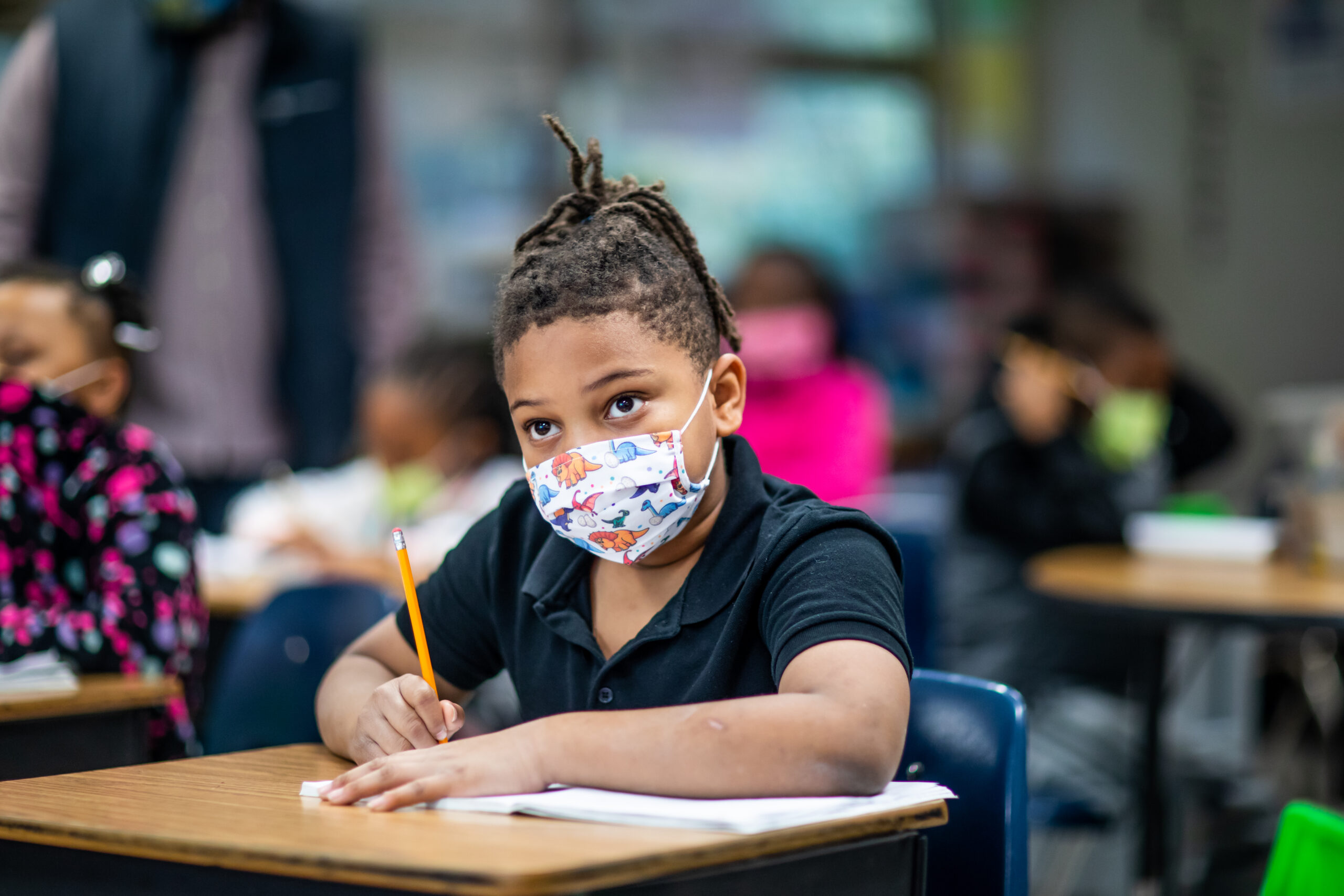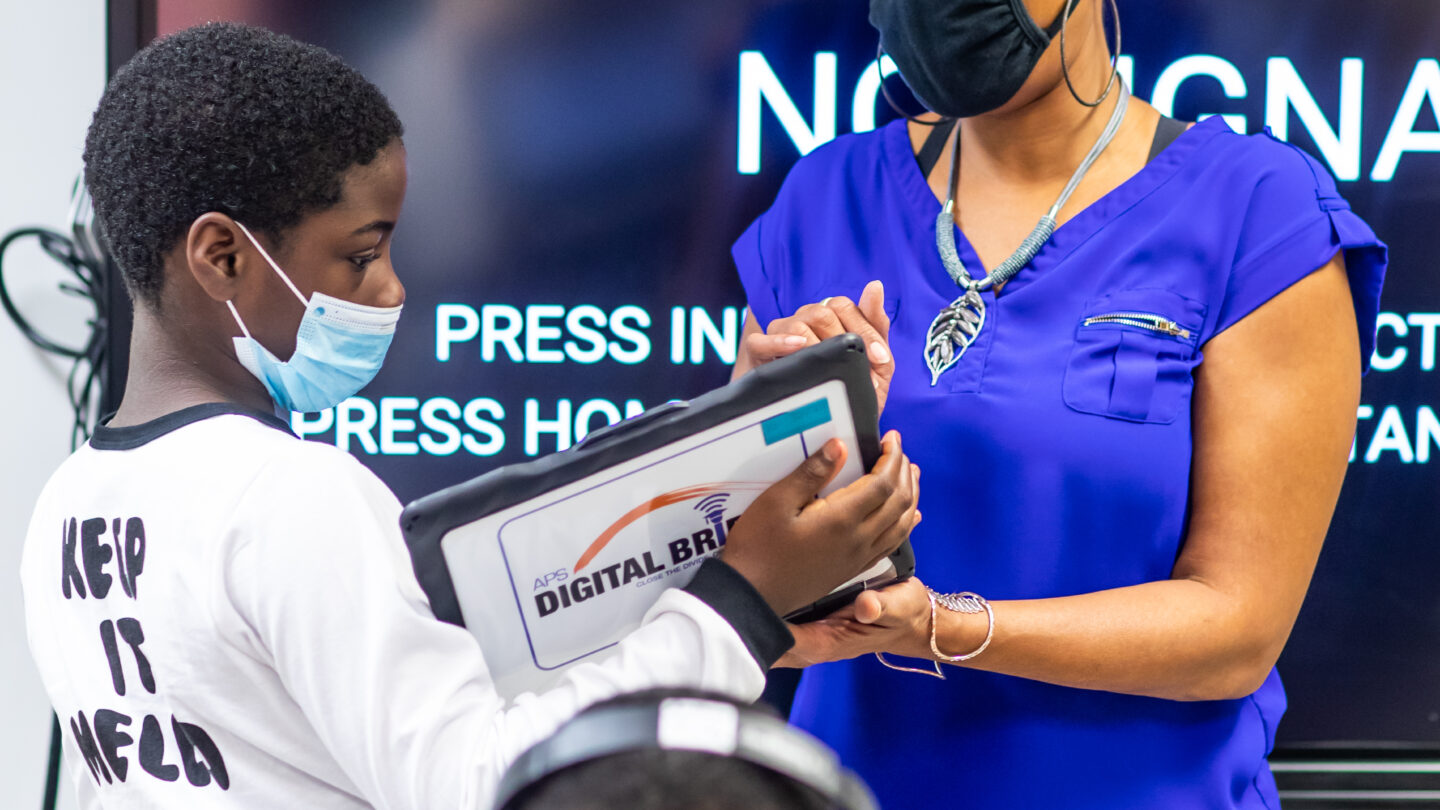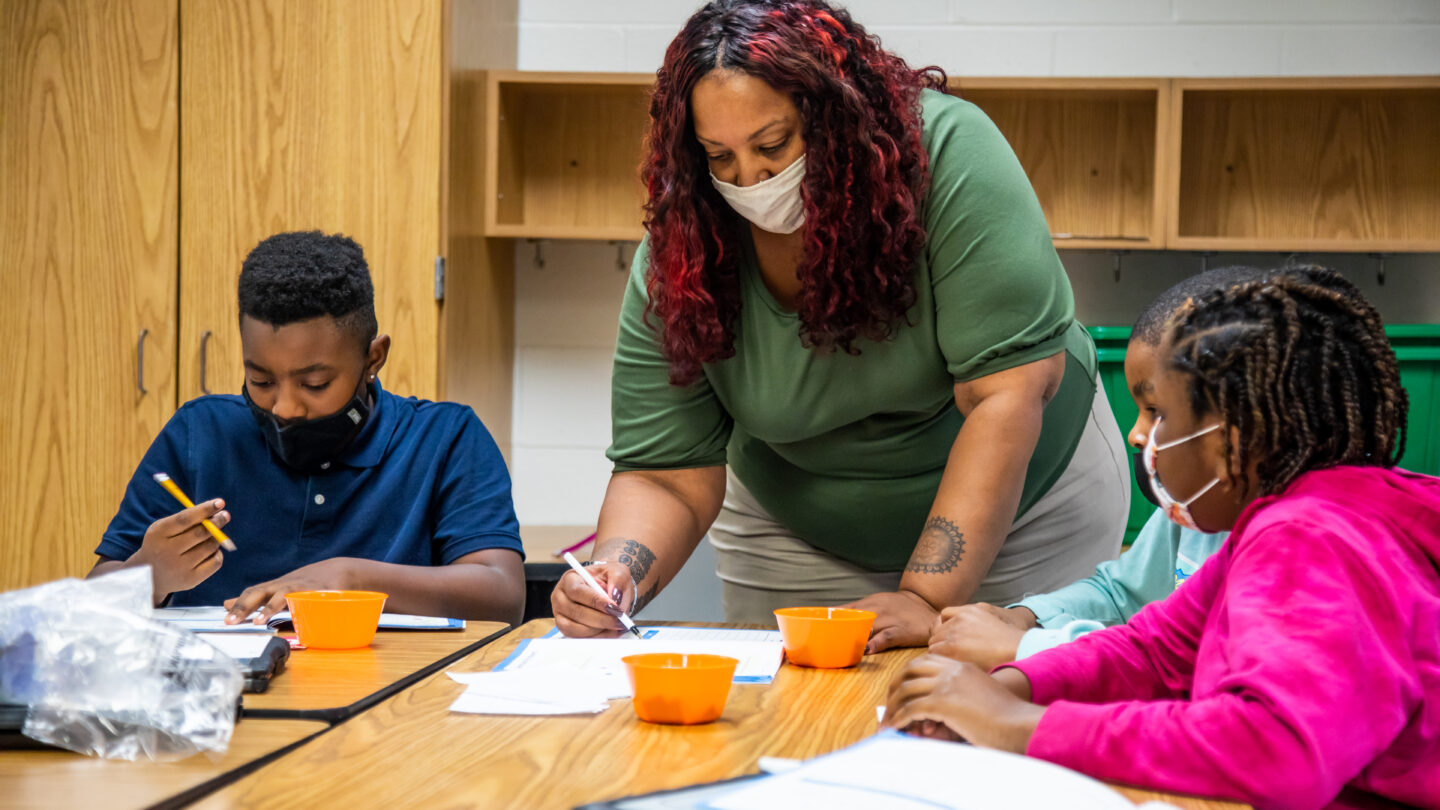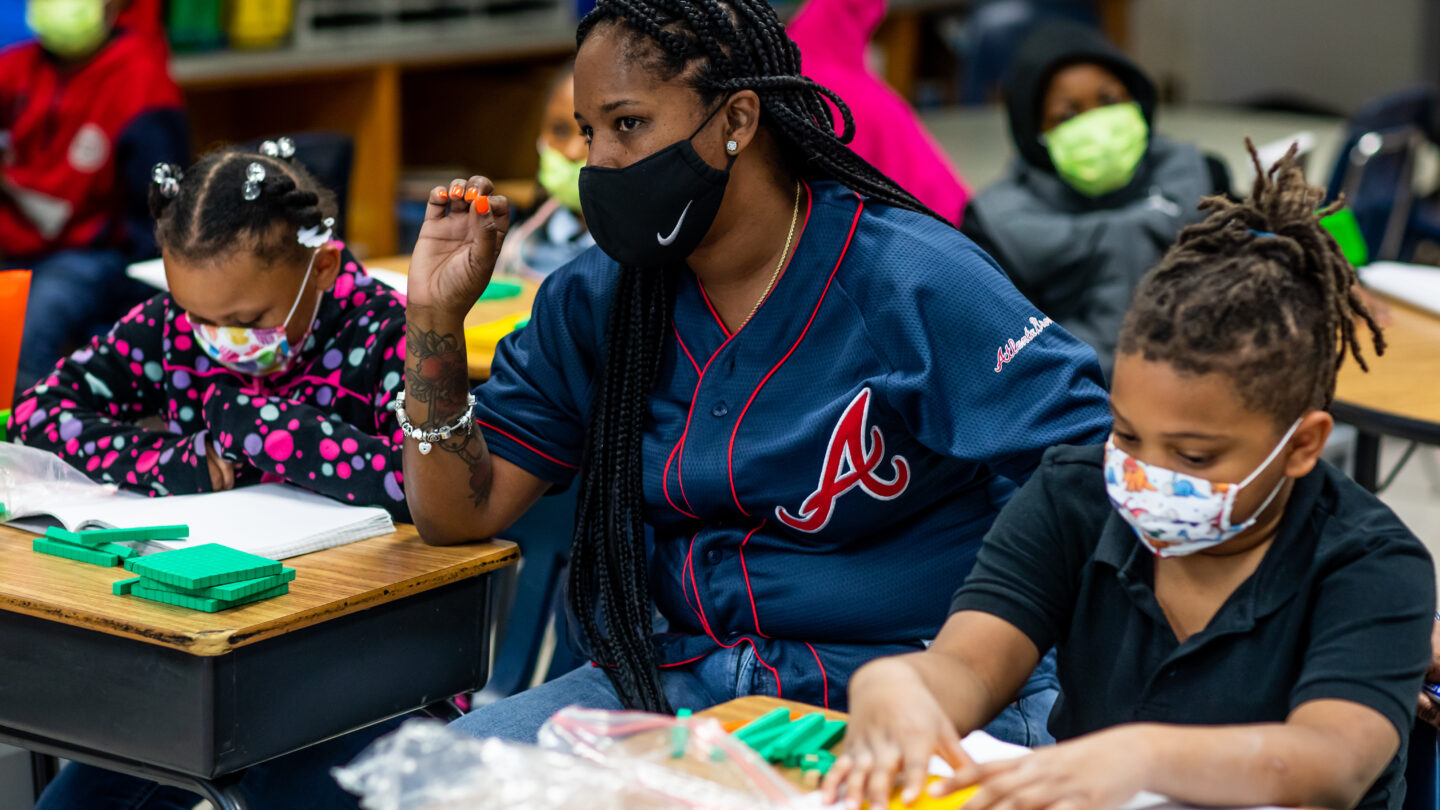For Atlanta’s youngest students, school is back in swing but looks different this year

Students in Aisha Blackwell Hardge’s third grade math class work through problems at separate desks. Before COVID, she would have them work in groups to share ideas.
Alphonso Whitfield / WABE
Metro Atlanta schools resumed in-person learning this year, but classrooms function differently now than they did before COVID-19.
‘What I Need’
Atlanta Public Schools extended the school day for elementary schools by 30 minutes. To make use of that time, Scott Elementary School on Atlanta’s west side has blocked off a portion of the morning for what principal Langston Longley calls “WIN” or “What I Need” time.
“All of our students were assessed at the beginning of school, [during the] first couple of weeks,” he says. “Let’s find out exactly where you are, how much loss is taking place, if any at all, and then put you in your appropriate groups.”
Educators worried about learning loss during the pandemic when most kids were learning virtually. APS remained remote longer than some Atlanta districts. When the school system did resume in-person classes in January, 60% of APS students opted to stay online. So, at the beginning of the 2021-22 school year, some students returned to the classroom for the first time in over a year.
Longley says not all students at Scott fell behind. So, the extra instructional time isn’t just aimed at catching kids up.
“The kids are in small groups based upon what their specific needs are, whether they can be accelerated forward, or there’s some remediation and foundational skills that we need to fill in,” he says. “Instead of putting a negative stigma on something and saying, ‘You’re behind,’ or, ‘There’s something that’s deficient about you,’ we wanted to focus on giving kids what they need.”

On the surface, the plan may seem like ability grouping, where students are placed in groups according to their skill level. Some research has criticized the practice, saying it slows academic progress for some Black, Hispanic, and economically disadvantaged students. 80% of students at Scott are considered economically disadvantaged. 94% of students are Black, 5% are Hispanic and 1% are white.
Longley says the WIN method isn’t the same as ability grouping.
“The way this differs is the groups flow, and they move very regularly,” he says. “So you’re not in this group for the entire year, you’re in this group for a module. It may be a few weeks, and it’s skill-specific. You may be in a high group [for] reading, but being a low group for math, as opposed to sometimes when people are ability grouping, they say these are the kids that are accelerated, you get accelerated classes.”
While APS was remote, the district provided tablets and internet hotspots for families. But school social worker Oneisha Smith says some students still had trouble connecting.
“There was a struggle there in regards to just trying to have consistent Internet access while they’re not here,” she says. “So that’s why, for example, our alternative would just be okay, let’s give them a hard copy of the work because we know that there are some challenges with them being at home with the internet access.”
Ensuring students completed “hard copies” of their assignments was also challenging, she says.

Scott hasn’t had to shut down classrooms or grade levels due to COVID exposure. But individual students have had to quarantine. Smith says that has increased absentee rates and has made it hard to keep track of students’ progress.
“Just making sure when they do go out on quarantine, that they’re getting, maybe packets or that they have a tech device that they can go into Google Classroom, where the teachers will put the work,” Smith says. “While there is kind of a gap, we just want to close the gap while they’re at home, so then when they return, they’re not too far behind.”
Changes Big and Small
APS has followed CDC guidelines for schools, so there are hand sanitizing stations in classrooms and hallways. Everyone must wear masks inside. Water fountains are only used to fill up bottles or cups—not to drink from. The district has also implemented school surveillance testing and offered COVID-19 vaccines at middle and high schools for eligible students and teachers.
Instead of putting a negative stigma on something and saying, ‘You’re behind,’ or, ‘There’s something that’s deficient about you,’ we wanted to focus on giving kids what they need.”
Langston Longley, principal of Scott Elementary School
Scott fifth-grader Alyssa De La O says she had to adjust to all the COVID-related changes this year.
“I’m not really used to wearing a mask all the time,” she says. “I had to get used to being in the classroom, behaving and just having to stay in my seat because I remember, I was on Zoom last year, and just sitting at home on the computer.”

There have been big and small changes. In one third-grade math class, kids keep their supplies in plastic bags and sit at separate desks. The teacher, Aisha Blackwell Hardge is walking her students through a word problem. She asks them to explain each step because that’s what they’ll have to do on the state’s Georgia Milestones assessment this year. Third grade is the first year students take the test.
“The way that…Georgia Milestones is set up, they have to do a lot of constructive responses where they have to explain [their answers],” Hardge says. “I feel like if you can verbalize it, it should make it easier when it’s time to transfer.”
There are just 12 students in the class, so Hardge can move around the room and check to make sure everyone’s on the right track. Pre-COVID, she would have them work together to solve problems.
“I like to do a lot of group activities where they can kind of bounce off ideas with each other,” she says. “But we have to keep them certain feet apart, but we still make it work.”

Hardge says she may keep some COVID-related rules—like bagging up supplies.
“You don’t have to worry about going around passing [things out], they already have what they need in their boxes,” she says. “So that was a good thing from the pandemic.”
COVID has changed how schools operate. Students eat lunch in their classrooms instead of in the cafeteria. Menus are different this year due to supply chain problems. Students and teachers talk through masks all day. But here at Scott, it’s clear everyone’s glad to be back—even if the return to normal is taking longer than they’d hoped.
Note of disclosure: The Atlanta Board of Education holds WABE’s broadcast license.







